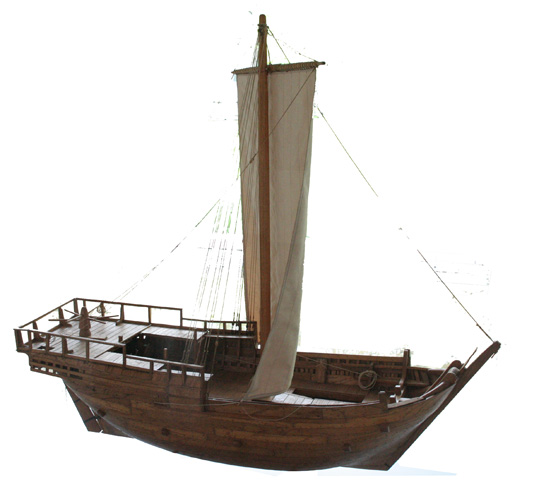Bremen cog on:
[Wikipedia]
[Google]
[Amazon]
 The Bremen cog or ''Bremer Kogge'' is a well-preserved wreck of a cog dated to 1380, found in 1962 in
The Bremen cog or ''Bremer Kogge'' is a well-preserved wreck of a cog dated to 1380, found in 1962 in
Bremen cog at the German Maritime Museum (german)
Archaeology of shipwrecks Ships preserved in museums Archaeological discoveries in Germany 14th-century artefacts 1962 archaeological discoveries {{shipwreck-stub
 The Bremen cog or ''Bremer Kogge'' is a well-preserved wreck of a cog dated to 1380, found in 1962 in
The Bremen cog or ''Bremer Kogge'' is a well-preserved wreck of a cog dated to 1380, found in 1962 in Bremen
Bremen (Low German also: ''Breem'' or ''Bräm''), officially the City Municipality of Bremen (german: Stadtgemeinde Bremen, ), is the capital of the German state Free Hanseatic City of Bremen (''Freie Hansestadt Bremen''), a two-city-state consis ...
. Today, it is displayed at the German Maritime Museum
The German Maritime Museum (german: Deutsches Schifffahrtsmuseum (DSM)) is a museum in Bremerhaven, Germany. It is part of the Gottfried Wilhelm Leibniz Scientific Community. The main museum building was opened on 5 September 1975 by then-presid ...
in Bremerhaven
Bremerhaven (, , Low German: ''Bremerhoben'') is a city at the seaport of the Free Hanseatic City of Bremen, a state of the Federal Republic of Germany.
It forms a semi-enclave in the state of Lower Saxony and is located at the mouth of the Riv ...
as one of the main features. Three nearly identical replicas of this cog have been built: ''Ubena von Bremen'', ''Hansekogge'', and ''Roland von Bremen''.
The discovery
On 8 October 1962, wooden fragments of a ship were found in theWeser River
The Weser () is a river of Lower Saxony in north-west Germany. It begins at Hannoversch Münden through the confluence of the Werra and Fulda. It passes through the Hanseatic city of Bremen. Its mouth is further north against the ports of Bre ...
during dredging operations. They turned out to be remnants of a cog that seems to have sunk during a storm flood
A storm surge, storm flood, tidal surge, or storm tide is a coastal flood or tsunami-like phenomenon of rising water commonly associated with low-pressure weather systems, such as cyclones. It is measured as the rise in water level above the no ...
after drifting away from a shipyard
A shipyard, also called a dockyard or boatyard, is a place where ships are built and repaired. These can be yachts, military vessels, cruise liners or other cargo or passenger ships. Dockyards are sometimes more associated with maintenance a ...
before completion. Until then, cogs had only been known from medieval documents and seals. Based on the dendrochronological
Dendrochronology (or tree-ring dating) is the scientific method of dating tree rings (also called growth rings) to the exact year they were formed. As well as dating them, this can give data for dendroclimatology, the study of climate and atmos ...
analysis of the oak timber from which the cog was built, the ship was dated to about 1380 AD.
Salvage and reconstruction
The large parts were measured, registered, and stored in water basins in a pier shed in Bremen to prevent the wood from drying and shrinking. A further search with the aid of adiving bell
A diving bell is a rigid chamber used to transport divers from the surface to depth and back in open water, usually for the purpose of performing underwater work. The most common types are the open-bottomed wet bell and the closed bell, which c ...
ship in 1965 retrieved more than 2000 additional parts, which also were stored. It was decided to exhibit it in the planned German Maritime Museum
The German Maritime Museum (german: Deutsches Schifffahrtsmuseum (DSM)) is a museum in Bremerhaven, Germany. It is part of the Gottfried Wilhelm Leibniz Scientific Community. The main museum building was opened on 5 September 1975 by then-presid ...
in Bremerhaven. In 1972, the ''Koggehalle'' had been completed and the parts were reassembled under constant sprinkling. Almost the complete starboard side and a third of the port side could be reconstructed. The construction then was encased in a tank to be impregnated in polyethylene glycol
Polyethylene glycol (PEG; ) is a polyether compound derived from petroleum with many applications, from industrial manufacturing to medicine. PEG is also known as polyethylene oxide (PEO) or polyoxyethylene (POE), depending on its molecular we ...
for 18 years. Finally, it was cleared from the remnants and has been on display since 2000, 25 years after the opening of the museum.
The Bremer cog had one mast and was square-rigged
Square rig is a generic type of sail and rigging arrangement in which the primary driving sails are carried on horizontal spars which are perpendicular, or square, to the keel of the vessel and to the masts. These spars are called ''yards'' and ...
, with a carvel-built bottom and clinch-built sides. The rib timber was built in after the hull had been made.Exhibition notes, Hanseatic Museum in Bergen (2014) The cog was 24 m long, 8 m in the beam, and just over 4 m high on the sides. These measurements would have produced an estimated load capacity of 130 tons.Susan Rose, The Medieval Sea, (2007) Other estimates put the cargo capacity at only 90 tons.
See also
*Kolding cog
''Kolding cog'' or ''Koldingkoggen'' is a shipwreck that was found in Kolding Fjord in 1943. The ship was a ca. 18 m long cog built of oak around the year 1190. The wreck was examined by the National Museum of Denmark in 2001. The study discovere ...
References
External links
Bremen cog at the German Maritime Museum (german)
Archaeology of shipwrecks Ships preserved in museums Archaeological discoveries in Germany 14th-century artefacts 1962 archaeological discoveries {{shipwreck-stub